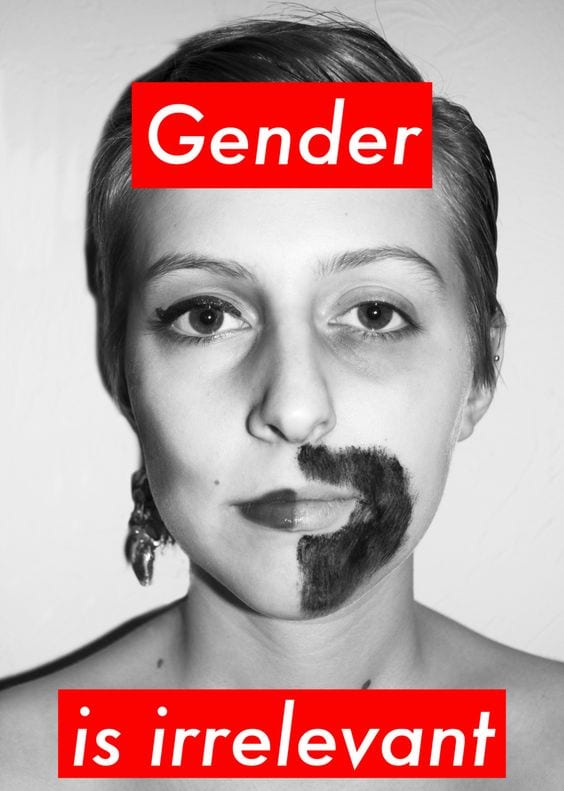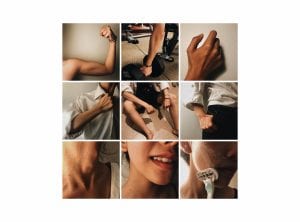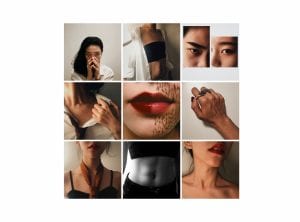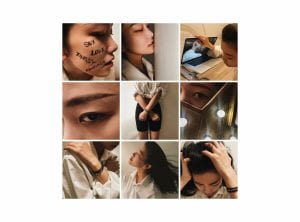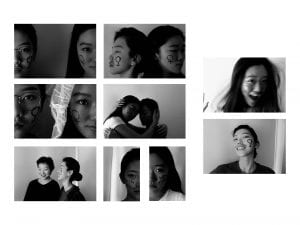Part 1
The theme of this is “masculine”, I mainly expressed it through the appearance of men, such as muscles, hand lines, Adam’s apple, etc. At the same time, I also used the feature of male’s action, such as shaving and sitting position.
The theme of this is “neutral”, I chose to express it in a contrasting way. For example, half of the long hair; half of the short hair, or half with the beard, half with the lipstick. I also used eyes and muscles, I made my half of the muscle more manlike by photoshop.
The theme of this is “asexual”, I mainly showed the different feelings of asexuals, such as helplessness, pain, or freedom. I used eyes to express the two moods of asexuals, first is that they don’t care about any relationship, and the second is craving.
Part 2
LGBTQ2S is an acronym for lesbian, gay, bisexual, transgender, transsexual, queer, questioning, and 2-Spirit. Some estimates put the number at 40% of homeless youth identifying as LGBTQ2S.
The movie I chose was “The Danish Girl”, I like this movie very much, and this was my second time watching it. The Creator is fair, and creatures, animals, and humans are beautiful. The same of human nature, the nature of a woman not only makes him experience pain during the transformation process, but also beauty. Wegener is not a homosexual, to be precise, he is a transgender, and in the age when the transgender was not accepted, the behavior he made was very braved.
One part I liked very much was the process of Wegener refused the skirt for the first time to the subtle transformation that began to appreciate himself and began to feminine his movements. This process is incredible, incomprehensible, or painful. I also liked when Gerda tried to do the makeup for him, and he said: “Let me try.” I think this is a significant conversion. It is fascinating that he completely rejects from the beginning to accepts and enjoys. And when Gerda started painting him, his sentence played an important factor,“It is your fault, you excite her.”
As Lily said, it was Gerda who made Lily and completed Lily. It was she who first discovered the beauty of Lily with a brush and created the image of Lily. After accepting Lily’s existence, she fulfilled Lily’s wish. From a sweet couple who has been married for six years, to a patient wife who helps her husband, to a strong backing that supports Lily. She witnessed the pain of her husband and saw Lily’s reluctance to wear men’s clothing, accepting her husband’s departure and Lily’s everything. From the love between husband and wife to the friendship with Lily, she never left anyone, even if she wanted to keep her husband, but she could not see Lily crying because she knew that this body is the same person.
At the end of the movie, it was my favorite episode. When Lily said “I am entirely myself.”, I was really happy for him. He paid too much and finally got a moment of happiness. And Gerda finally accompanied her to the last moment. When she returned to Wegener’s hometown, the scarf drifted away with the wind, and it was like Lily returned to her hometown and finally became free.
After watched this movie again, I to spontaneously sigh how courageous he is, how difficult it is, he represents not only himself, but all such people in today’s society, we should do our best to understand them, support them, not ridicule, because people have the freedom to choose their gender.
Part 3
Our theme is marriages of convenience, marriages of convenience is to hide one partner’s homosexuality in cases where being openly gay is punishable or potentially detrimental.
This is a story about gay men and lesbians.
Many people in the world are confused about their gender, and they are under pressure from society and family. They are lost, helpless, and even desperate, they want to be understood and supported.
The two protagonists in the story faced the same confusion, so they decided to get married (marriages of convenience). Although they need to take more pressure on this fake marriage, it is fortunate that they finally got the life they want, which is the greatest freedom for them.
Part 4: Reflection on Feedback
Regulus: Arrangement of pictures. Left side feels depressed; right side feels freed.
John: Likes black and white, makes story strong. Wrong male symbol, overusing symbols.
Gretchen: 3rd picture is confusing because don’t know if she is lover or mother.
Zen: Composition of whole frame. Better organization.
Abby: Use tripod. Pictures feel separate from film.
Cindy: Powerful symbols on face. odd color- show freedom.
I agree with most people’s evaluations, such as photos giving a sense of grief and freedom; black and white enhances the visual effect that the film brings to the audience, etc. But I disagree with Abby’s opinion because our photo is an aid to the film, it is only to introduce the theme of the film, and in terms of visual effects, we all use black and white to express. So I think we are doing very well on the connection.
In short, I am grateful for these criticisms, which is a good way for me to improve. I realized that I should be a little more to show that they (the protagonists in the film) are homosexual and lesbian, rather than directly describing the form of marriage.
